-
 Bitcoin
Bitcoin $117900
0.31% -
 Ethereum
Ethereum $3766
0.28% -
 XRP
XRP $3.176
-0.31% -
 Tether USDt
Tether USDt $1.000
0.00% -
 BNB
BNB $795.6
1.51% -
 Solana
Solana $186.8
-1.09% -
 USDC
USDC $0.9999
-0.01% -
 Dogecoin
Dogecoin $0.2353
-1.33% -
 TRON
TRON $0.3226
1.49% -
 Cardano
Cardano $0.8172
-1.08% -
 Sui
Sui $4.178
3.06% -
 Hyperliquid
Hyperliquid $43.05
-3.39% -
 Stellar
Stellar $0.4367
-0.57% -
 Chainlink
Chainlink $18.62
1.47% -
 Hedera
Hedera $0.2828
6.63% -
 Bitcoin Cash
Bitcoin Cash $584.7
5.65% -
 Avalanche
Avalanche $24.81
2.53% -
 Litecoin
Litecoin $112.8
-0.88% -
 UNUS SED LEO
UNUS SED LEO $8.975
-0.08% -
 Shiba Inu
Shiba Inu $0.00001395
-1.07% -
 Toncoin
Toncoin $3.285
-1.05% -
 Ethena USDe
Ethena USDe $1.001
0.01% -
 Polkadot
Polkadot $4.123
0.76% -
 Uniswap
Uniswap $10.49
-0.18% -
 Monero
Monero $326.5
0.14% -
 Dai
Dai $0.9999
-0.02% -
 Bitget Token
Bitget Token $4.576
0.34% -
 Pepe
Pepe $0.00001247
-1.55% -
 Cronos
Cronos $0.1400
3.77% -
 Aave
Aave $295.1
-0.73%
How to catch the old duck head pattern of the moving average? How to add positions when the duck's mouth is open?
The old duck head pattern, formed by three moving averages, helps crypto traders spot trend reversals and add positions when the "duck's mouth" opens.
Jun 09, 2025 at 07:56 pm

The "old duck head pattern" of the moving average is a popular technical analysis tool used by many traders within the cryptocurrency circle to identify potential trend reversals and trading opportunities. This pattern, characterized by its resemblance to a duck's head and bill, can be a valuable asset for those looking to make informed trading decisions. In this article, we will explore how to identify the old duck head pattern, how to add positions when the duck's mouth is open, and the key considerations to keep in mind when using this strategy.
Identifying the Old Duck Head Pattern
The old duck head pattern is formed by the interaction of three moving averages: a short-term moving average, a medium-term moving average, and a long-term moving average. The pattern gets its name from the visual representation it creates on a price chart, which resembles a duck's head and bill.
- The short-term moving average typically represents the duck's eye and is the fastest of the three moving averages. It is usually set to a period of 5 or 10 days.
- The medium-term moving average represents the duck's head and is set to a period of 20 or 30 days. This moving average is slower than the short-term moving average but faster than the long-term moving average.
- The long-term moving average represents the duck's bill and is the slowest of the three moving averages. It is typically set to a period of 50 or 100 days.
To identify the old duck head pattern, traders should look for the following characteristics:
- The short-term moving average (eye) should be above the medium-term moving average (head).
- The medium-term moving average (head) should be above the long-term moving average (bill).
- The three moving averages should be converging, with the short-term moving average beginning to cross below the medium-term moving average.
When these conditions are met, the old duck head pattern is formed, and traders may consider it a potential signal for a trend reversal or a change in market sentiment.
Adding Positions When the Duck's Mouth is Open
Once the old duck head pattern has been identified, traders may look to add positions when the "duck's mouth" is open. The duck's mouth refers to the space between the medium-term moving average (head) and the long-term moving average (bill) after the short-term moving average (eye) has crossed below the medium-term moving average.
To add positions when the duck's mouth is open, follow these steps:
- Monitor the moving averages closely after the short-term moving average crosses below the medium-term moving average. This crossover signals the potential opening of the duck's mouth.
- Wait for the medium-term moving average to begin diverging from the long-term moving average. As the medium-term moving average starts to move away from the long-term moving average, the duck's mouth is considered open.
- Enter a long position when the medium-term moving average is clearly above the long-term moving average, and the short-term moving average is below the medium-term moving average. This indicates that the duck's mouth is open and the potential for a bullish trend is increasing.
- Set a stop-loss order below the recent swing low to manage risk and protect against potential adverse price movements.
- Consider adding to the position as the medium-term moving average continues to diverge from the long-term moving average, and the price continues to trend higher. However, be cautious not to over-leverage the position and always adhere to proper risk management principles.
Key Considerations When Using the Old Duck Head Pattern
While the old duck head pattern can be a valuable tool for identifying potential trading opportunities, there are several key considerations that traders should keep in mind when using this strategy:
- Timeframe: The old duck head pattern can be applied to various timeframes, from short-term intraday charts to longer-term daily or weekly charts. Traders should choose a timeframe that aligns with their trading style and objectives.
- Confirmation: It is essential to seek confirmation from other technical indicators or chart patterns before entering a trade based solely on the old duck head pattern. This can help increase the probability of a successful trade and reduce the risk of false signals.
- Risk management: As with any trading strategy, proper risk management is crucial when using the old duck head pattern. Traders should always set stop-loss orders and adhere to position sizing guidelines to protect their capital.
- Market conditions: The old duck head pattern may perform differently in various market conditions, such as trending markets, ranging markets, or volatile markets. Traders should be aware of the current market environment and adjust their strategy accordingly.
Examples of the Old Duck Head Pattern in Cryptocurrency Markets
To better understand how the old duck head pattern can be applied in cryptocurrency markets, let's look at a few examples:
- Bitcoin (BTC): In early 2021, Bitcoin formed an old duck head pattern on the daily chart. The short-term 10-day moving average crossed below the medium-term 30-day moving average, while the medium-term moving average remained above the long-term 50-day moving average. As the medium-term moving average began to diverge from the long-term moving average, traders could have added long positions, which would have been profitable as Bitcoin continued its bullish trend.
- Ethereum (ETH): In mid-2020, Ethereum displayed an old duck head pattern on the weekly chart. The short-term 5-week moving average crossed below the medium-term 10-week moving average, while the medium-term moving average stayed above the long-term 20-week moving average. As the medium-term moving average started to move away from the long-term moving average, traders could have entered long positions, which would have captured the subsequent bullish move in Ethereum.
Common Pitfalls and How to Avoid Them
While the old duck head pattern can be a useful tool for identifying potential trading opportunities, there are some common pitfalls that traders should be aware of and take steps to avoid:
- False signals: Like any technical analysis tool, the old duck head pattern is not infallible and can sometimes generate false signals. Traders should always seek confirmation from other indicators and avoid relying solely on this pattern for their trading decisions.
- Over-trading: The excitement of identifying an old duck head pattern can sometimes lead traders to over-trade or enter positions too aggressively. It is essential to exercise patience and discipline, waiting for clear signals and adhering to proper risk management principles.
- Ignoring market context: The old duck head pattern should always be considered in the context of the broader market environment. Traders should take into account factors such as overall market trends, sentiment, and news events that may impact the price action of the cryptocurrency they are trading.
Frequently Asked Questions
Q: Can the old duck head pattern be used for short-selling or bearish trades?
A: Yes, the old duck head pattern can be adapted for short-selling or bearish trades. In this case, traders would look for the short-term moving average to cross above the medium-term moving average, while the medium-term moving average remains below the long-term moving average. The opening of the duck's mouth would be indicated by the medium-term moving average diverging from the long-term moving average to the downside.
Q: How can I optimize the moving average periods for the old duck head pattern?
A: The moving average periods used in the old duck head pattern can be optimized based on the specific cryptocurrency and timeframe being traded. Traders can experiment with different combinations of short-term, medium-term, and long-term moving averages to find the settings that work best for their trading style and objectives. Backtesting the pattern with historical data can help identify the most effective moving average periods.
Q: Are there any other technical indicators that complement the old duck head pattern?
A: Yes, there are several technical indicators that can complement the old duck head pattern and provide additional confirmation for trading decisions. Some popular indicators to consider include the Relative Strength Index (RSI), the Moving Average Convergence Divergence (MACD), and chart patterns such as support and resistance levels or trend lines. By combining the old duck head pattern with other technical analysis tools, traders can increase their confidence in potential trading opportunities.
Q: Can the old duck head pattern be used across different cryptocurrency markets?
A: Yes, the old duck head pattern can be applied to various cryptocurrency markets, including major cryptocurrencies like Bitcoin and Ethereum, as well as altcoins and tokens. However, traders should be aware that the pattern may perform differently across different markets due to factors such as liquidity, volatility, and market sentiment. It is essential to test and validate the pattern on the specific cryptocurrency being traded before relying on it for trading decisions.
Disclaimer:info@kdj.com
The information provided is not trading advice. kdj.com does not assume any responsibility for any investments made based on the information provided in this article. Cryptocurrencies are highly volatile and it is highly recommended that you invest with caution after thorough research!
If you believe that the content used on this website infringes your copyright, please contact us immediately (info@kdj.com) and we will delete it promptly.
- Cryptos to Watch in 2025: Punisher Coin, Chainlink, and the Altcoin Arena
- 2025-07-27 18:30:13
- Bitcoin, Altcoins, Rebound: Navigating the Crypto Comeback Trail
- 2025-07-27 18:30:13
- Ethereum, Bitcoin, and Altcoins: A Shift in Crypto Tides?
- 2025-07-27 19:10:13
- Windtree Therapeutics' Bold BNB Strategy: A $520 Million Crypto Play
- 2025-07-27 19:10:13
- Solana, Staking, and Unilabs: What's the Buzz in the Crypto Space?
- 2025-07-27 16:50:13
- VeChain, HBAR, Remittix: Navigating the Crypto Landscape in 2025
- 2025-07-27 17:10:12
Related knowledge
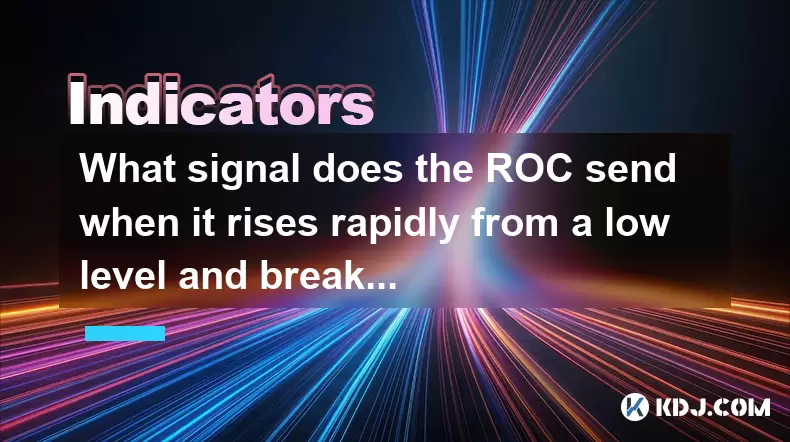
What signal does the ROC send when it rises rapidly from a low level and breaks through the zero axis?
Jul 27,2025 at 10:15am
Understanding the Rate of Change (ROC) IndicatorThe Rate of Change (ROC) is a momentum-based oscillator used in technical analysis to measure the perc...
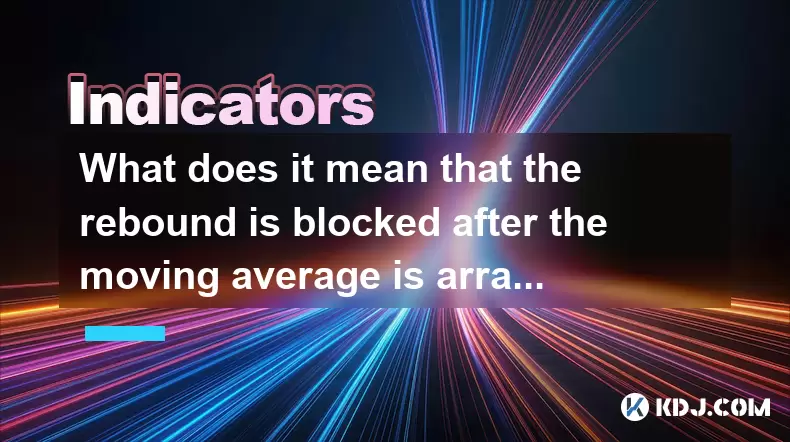
What does it mean that the rebound is blocked after the moving average is arranged in a short position for the first time?
Jul 26,2025 at 10:51am
Understanding the Short-Term Moving Average ConfigurationWhen traders refer to a 'short position arrangement' in moving averages, they are describing ...
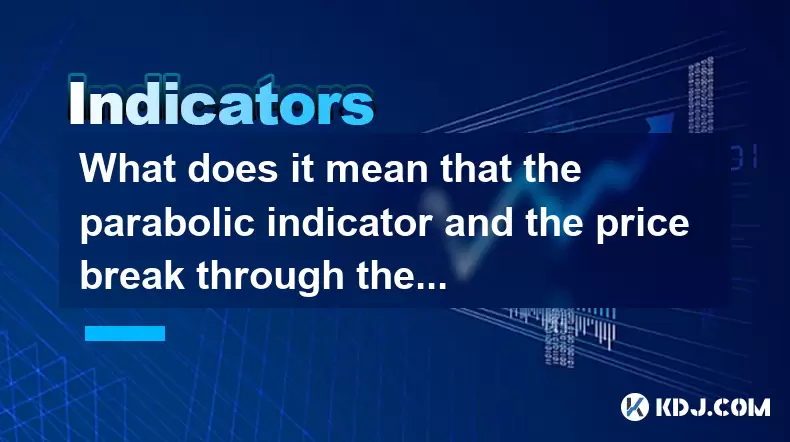
What does it mean that the parabolic indicator and the price break through the previous high at the same time?
Jul 26,2025 at 07:22pm
Understanding the Parabolic Indicator (SAR)The Parabolic SAR (Stop and Reverse) is a technical analysis tool developed by J. Welles Wilder to identify...
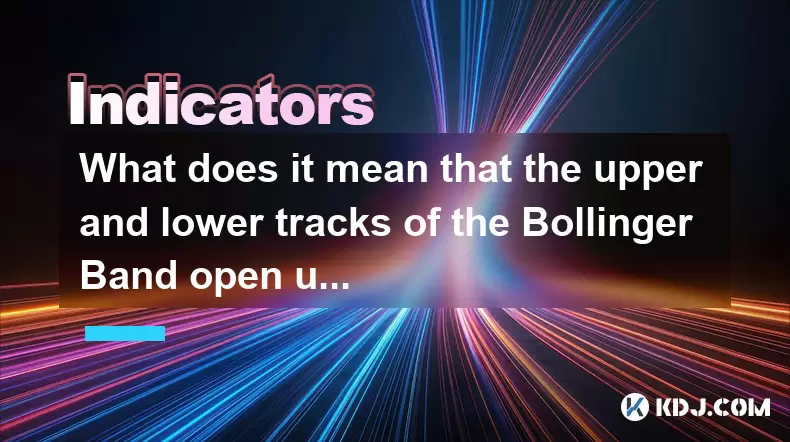
What does it mean that the upper and lower tracks of the Bollinger Band open upward at the same time?
Jul 27,2025 at 02:49pm
Understanding the Bollinger Band StructureThe Bollinger Band is a widely used technical analysis tool developed by John Bollinger. It consists of thre...
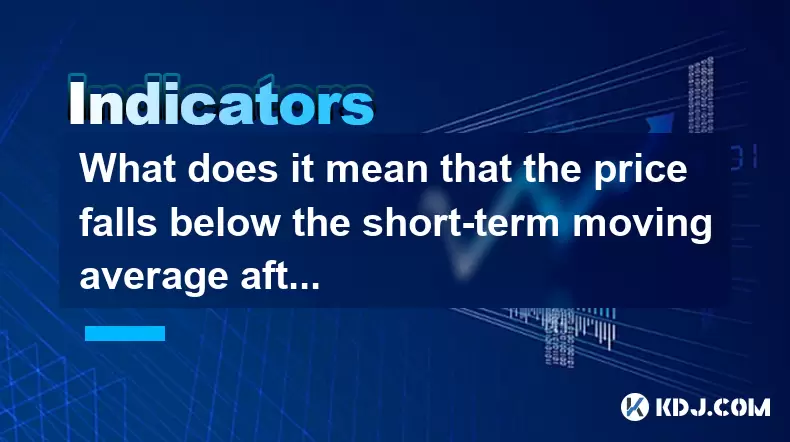
What does it mean that the price falls below the short-term moving average after the RSI top divergence?
Jul 26,2025 at 11:01pm
Understanding RSI Top Divergence in Cryptocurrency TradingThe Relative Strength Index (RSI) is a momentum oscillator widely used in cryptocurrency tra...
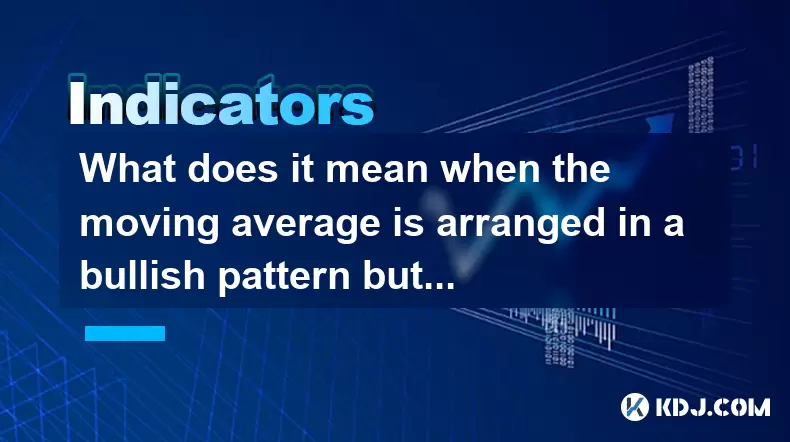
What does it mean when the moving average is arranged in a bullish pattern but the MACD bar is shortened?
Jul 27,2025 at 06:07am
Understanding the Bullish Moving Average PatternWhen traders observe a bullish moving average pattern, they typically refer to a configuration where s...

What signal does the ROC send when it rises rapidly from a low level and breaks through the zero axis?
Jul 27,2025 at 10:15am
Understanding the Rate of Change (ROC) IndicatorThe Rate of Change (ROC) is a momentum-based oscillator used in technical analysis to measure the perc...

What does it mean that the rebound is blocked after the moving average is arranged in a short position for the first time?
Jul 26,2025 at 10:51am
Understanding the Short-Term Moving Average ConfigurationWhen traders refer to a 'short position arrangement' in moving averages, they are describing ...

What does it mean that the parabolic indicator and the price break through the previous high at the same time?
Jul 26,2025 at 07:22pm
Understanding the Parabolic Indicator (SAR)The Parabolic SAR (Stop and Reverse) is a technical analysis tool developed by J. Welles Wilder to identify...

What does it mean that the upper and lower tracks of the Bollinger Band open upward at the same time?
Jul 27,2025 at 02:49pm
Understanding the Bollinger Band StructureThe Bollinger Band is a widely used technical analysis tool developed by John Bollinger. It consists of thre...

What does it mean that the price falls below the short-term moving average after the RSI top divergence?
Jul 26,2025 at 11:01pm
Understanding RSI Top Divergence in Cryptocurrency TradingThe Relative Strength Index (RSI) is a momentum oscillator widely used in cryptocurrency tra...

What does it mean when the moving average is arranged in a bullish pattern but the MACD bar is shortened?
Jul 27,2025 at 06:07am
Understanding the Bullish Moving Average PatternWhen traders observe a bullish moving average pattern, they typically refer to a configuration where s...
See all articles

























































































